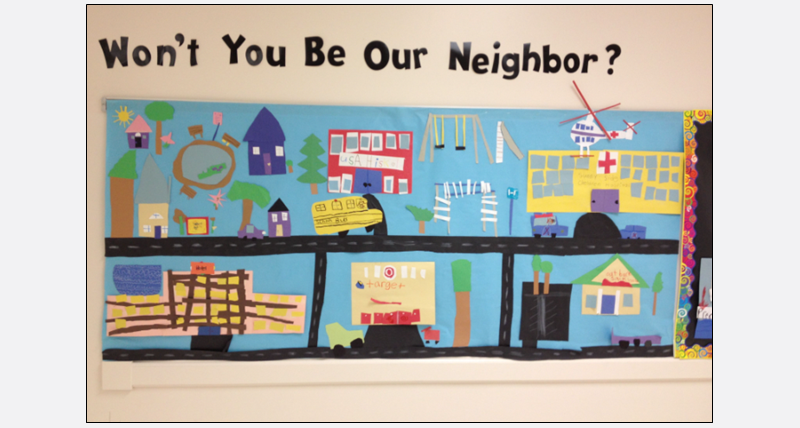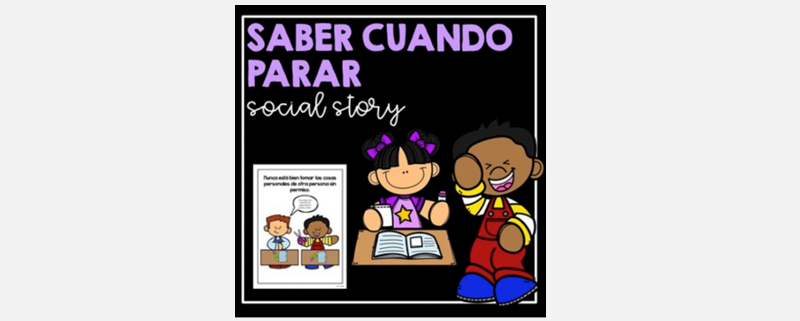Parar/To stop
WAYS WE CAN USE THE WORD
DIRECT ACTION: e.g., Yo paro. (I stop.) Para (Stop-Imperative).
GAIN ATTENTION: e.g. Papá, no puedo parar ahora. (Dad, I can’t stop now.)
SHARE INFORMATION: e.g., Es hora de parar. (It’s time to stop.)
ASK A QUESTION: e.g., ¿Cuándo paramos? (When do we stop?)
ANSWERING A QUESTION: e.g., Sí, quiero parar. (Yes, I want to stop.)
CONJUGATIONS FOR PRESENT AND PAST (PRETÉRITO INDEFINIDO)
|
SUBJECT |
PRESENT |
PAST |
|
I |
Paro |
Paré |
|
You |
Paras |
Paraste |
|
He/She/You (Formal) |
Para |
Paró |
|
We |
Paramos |
Paramos |
|
They/You All |
Paran |
Pararon |
For specific questions or more ideas regarding this core word activity sheet, please contact Loriel Roman @ lroman@sfsu.edu. Thank you!
Break time: Students can indicate when they would like to or need to stop an activity or would like to take a break (e.g., Quiero parar - I want to stop).
Crossing the Street: When waiting to cross the street, they can indicate when they should stop to ensure safety (e.g., Hora de parar y esperar - time to stop and wait).
Snack/mealtimes: During play time or recess the adult can prompt the student to stop the game or activity possibly for further instruction or if they would like to stop (e.g., ¿Te gustaría parar? - would you like to stop?)
The student can indicate when they want to stop eating or drinking their meal or snack (e.g., Quiero parar ahora – I want to stop now).
Circle Time/Transitions: During circle time, the adult can indicate when one routine Is complete, or when the activity has been stopped, before moving onto the next routine or activity (e.g., Hora de parar – time to stop).

Toys and Games:
Students can participate in stoplight games (red, yellow, green) during recess or as a group activity. (e.g., Para!)
Adults can indicate to students when playtime has been stopped, and when the group will move on to the next activity. (e.g., Hora de parar/time to stop)
Adults and students can coordinate a race-style game with clear ‘go (vamos)’ and ‘stop (para)’ signals with the use of starting and finish lines.
Adults and students can coordinate a ‘musical chairs’ style game where music or a video is played and stopped where each student can ‘freeze’ and continue once the video or music is continued.
Recess Routine:
Adults can indicate when recess is done and when all recess activity should be stopped. (e.g., Hora de parar/time to stop)
Here is a suggested book that can assist in teaching the core word:
- Rema Rema, Sin Parar By Kidsbooks | Children’s book
- In this children’s book/song based on “row, row, row your boat,” this book can either be read or played as a song that can be enhanced with a melody.
Adults can help model the word “parar” in the moment using their communication system to indicate when a break is needed. This will communicate that the student can share when they need to take a break, which will help build coping strategies, self-agency, vocabulary, and communication skills.
Students can refer to a communication board when interacting with others to share when it's time to go/stop, ask for what they want or even ask for more. For example, when playing with other students, “quiero parar,” can be placed on a board such as this to communicate that the student would like to stop.

During motor activities or PE, students can indicate when they would like to stop, or ask when it’s time to stop (quiero parar).
Red Light, Green Light Game: In this game students can participate in a Red Light, Green Light style game where students are asked to go (green light) and stop (red light) in a spontaneous manner. This following video is in both English and Spanish and includes other commands such as jumping or skipping. For example, phrases such as “luz roja significa parar” (red light means to stop) can be displayed.
Freeze Tag: In this game, students can participate in a tag game where once they’re “tagged” they have to stop or freeze. The only way they can become “unfrozen” is if they are tagged by another player.
Neighborhood Model: Students can participate in building a model road with streets, trees, people, neighborhoods, and stop signs. When testing out their chosen vehicles on the road, the student can practice stopping and going based on the stoplight colors. For example, we can ask the student, “¿Dónde paramos? (where do we stop?)”, and the student can communicate, “Puedo parar aquí (I can stop here).”

Social Story - Saber Cuándo Parar (know when to stop): Students can participate with a social story about knowing when to stop and respect others’ space, or how to share when they might need space as well. For example, a student can participate in a social story such as “Samantha asked me to stop, so I will need to stop,” or “Samantha me pidió que me detuviera, así que tendré que parar.”

Making a stop sign: Students can make a stop sign and even make a road and put their sign to use.
Red Light: Stop and Go Action Game: While playing this game, the students can take turns playing, and identifying when to stop (parar) or go.
WORD WALL: Add the word(s) stop/parar on the Word Wall.
READING and the Word Wall: Sound out the letters together. Have the students find the word on the AAC system.
WRITING and the Word Wall: Using a pencil or alternative pencil, have students try to type the word on the keyboard or write the word together.